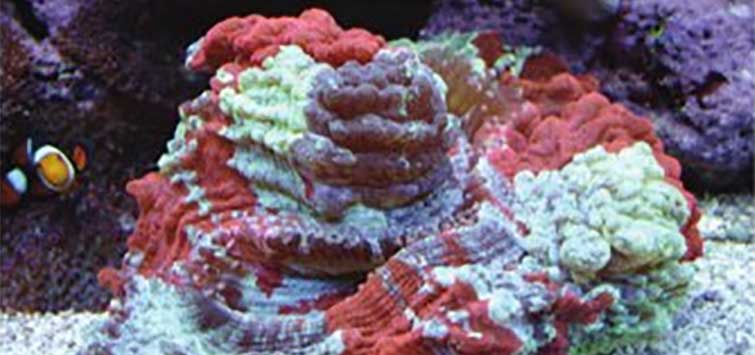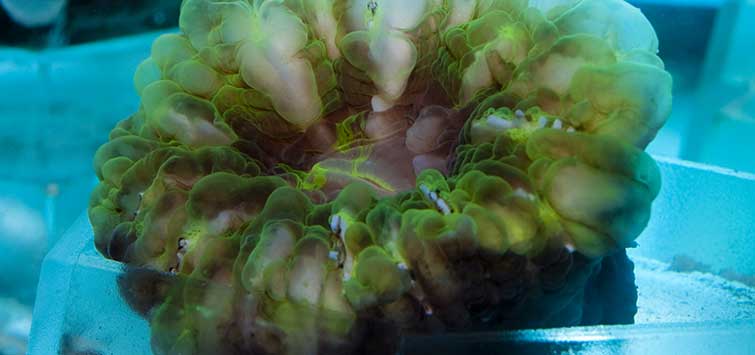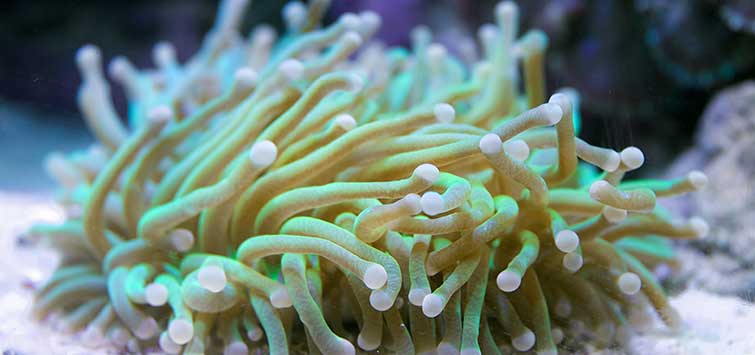Cynarina deshayesiana
Common Names: Meat coral, open meat coral, knob coral
Phylum: Cnidaria
Class: Anthozoa
Order: Scleractinia
Family: Mussidae
Range: Central Indo-Pacific and Red Sea
Natural Environment: This mostly circular-in-shape photosynthetic stony coral with a single large fleshy polyp generally inhabits protected reef environments, where it’s sometimes found attached to walls under overhangs, yet usually found free-living on sandy or muddy bottoms
Water Requirements: Calcium 380 to 430 ppm, alkalinity 3.5 meq/l, pH 8.1 to 8.2, specific gravity 1.024 to 1.026, and a temperature range of 74° to 82°F (23° to 27°C).
Captive Care
This is a beautiful and very hardy stony coral that is seen quite frequently in the trade. Except for proper placement in the aquarium, it requires little intervention from the aquarist to remain healthy.
Placement
As for proper placement, there are two possibilities. It can be placed on the bottom substrate, but in a place where disturbed sand will not cover its large polyp and cause it to become stressed when sloughing off excessive sand particles. Or it may also be placed about halfway up in the aquarium in a shady and secure area, but where the weight of its very large single polyp will not excessively overlap the area its skeleton is setting on, as the weight of the overlapping tissue may tear the polyp, especially if it receives more than gentle water movement. Moderate light is also an important aspect, as this coral does not like direct bright light.
Water Parameters and Feeding
Very gentle water currents are required, not only to prevent the large polyp from withdrawing in size, but also for carrying food to the animal when in feeding mode—otherwise, it will waste away. Since this is a photosynthetic stony coral, it does not require direct feeding, but that doesn’t mean it will not accept meaty-type foods, such as fortified brine shrimp, mysis, small pieces of marine fish/shrimp flesh, rotifers, products containing cyclops, etc.
Direct hand feeding should only occur when its feeding tentacles are displayed, which in the wild happens at night. Nevertheless, it will sometimes display them if it senses food entering the aquarium during the daytime, and I have in the past used a freeze-dried krill squished between my fingertips in the aquarium water to bring forth its feeding tentacles. Feeding, in my opinion, should not occur more than once every couple of weeks, as I’ve seen this coral go through some odd shape changes a day or two after feeding, and then become somewhat poor-looking for a week thereafter.

.png?h=595&iar=0&w=2781&hash=5FD5E69473BCC22199FBFA2FB71B6033)



